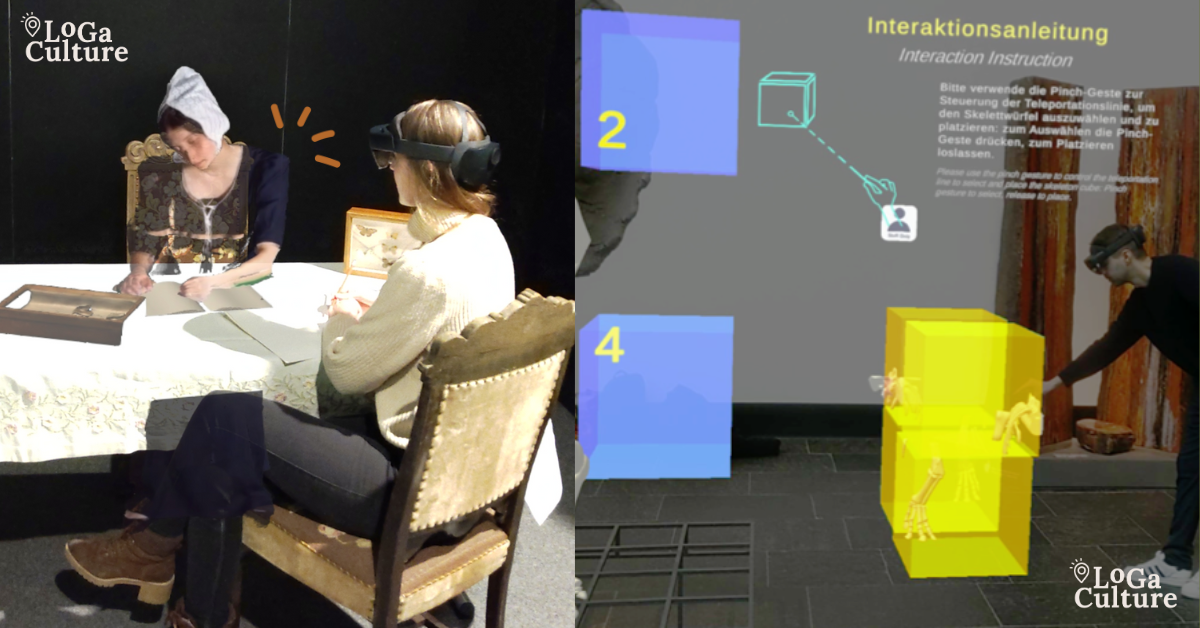At the Designing Interactive Systems Conference (DIS 2025) in Funchal, two research papers from LoGaCulture partners, led by Hochschule RheinMain Principal Investigator Ulrike Spierling, showcased how the project is redefining human–heritage interaction through immersive technologies. Both studies — rooted in Research through Design — reflect LoGaCulture’s vision of fostering deeper, more inclusive cultural engagement through digital storytelling and play.
Volumetric Human Realities in Augmented Spaces
In Volumetric Human Realities in Augmented Spaces: Interactive Storytelling and the Pursuit of Presence and Immersion, Noura Kräuter and colleagues explore how volumetric video (VV) — the technique of capturing real people as three-dimensional holograms — can transform cultural heritage storytelling. By embedding these volumetric “living histories” within augmented reality (AR) environments, their research investigates how presence, immersion, and narrative interactivity can evoke emotional and embodied connections with the past.
Kräuter’s low-cost mobile volumetric studio, developed within the LoGaCulture framework, makes this technology accessible for cultural institutions. Through case studies such as As If They Were Here and Sibylla Merian, they examines how audiences perceive and interact with volumetric characters in mixed-reality settings, offering new insights into how authenticity, spatial presence, and social co-presence can enhance cultural heritage experiences.
Their work represents LoGaCulture’s commitment to democratizing immersive heritage technologies — not only through technical innovation but also through reflective design methodologies that question how digital embodiment can sustain cultural memory and human connection.
Design Patterns for Playful Augmented Reality
Complementing this exploration of presence, Yu Liu and colleagues’ paper Design Patterns for Playful Augmented Reality: Enhancing Cultural Heritage Engagement with Game Mechanics investigates how game-based interaction patterns can increase visitor engagement and learning in museum contexts.
Using the Microsoft HoloLens 2, the team developed and evaluated three AR prototypes for the Senckenberg Natural History Museum:
- A Triceratops jigsaw puzzle, inviting users to reconstruct a dinosaur skeleton;
- A Deinonychus spatial drawing experience, allowing visitors to imagine and sketch the creature’s speculative appearance;
- And a Coral Reef object-catching game, raising awareness of human impact on marine ecosystems.
By distilling these experiences into formal interaction design patterns — “AR Exhibit Reassembler,” “AR Exhibit Feature Drawing,” and “AR Object Catching” — the study contributes a structured vocabulary for designing playful, educational AR experiences across cultural heritage settings. Their findings also highlight how balancing usability, cognitive load, and immersion can optimize both engagement and comprehension in public exhibitions.
From Presence to Play: LoGaCulture’s Expanding Framework
Together, these two DIS 2025 papers represent complementary facets of LoGaCulture’s mission: exploring how embodied storytelling and playful interaction can cultivate new relationships between people, places, and heritage.
Where Kräuter’s work advances presence through volumetric human performances, Liu’s research advances participation through pattern-based play. Both align with LoGaCulture’s broader goal of building open, scalable models for locative, gamified, and culturally resonant experiences that bridge human creativity with technological innovation.
As LoGaCulture continues to expand across Europe, these contributions demonstrate the project’s growing role as a catalyst for interdisciplinary dialogue — linking design research, digital heritage, and human–computer interaction to imagine the future of cultural engagement.
